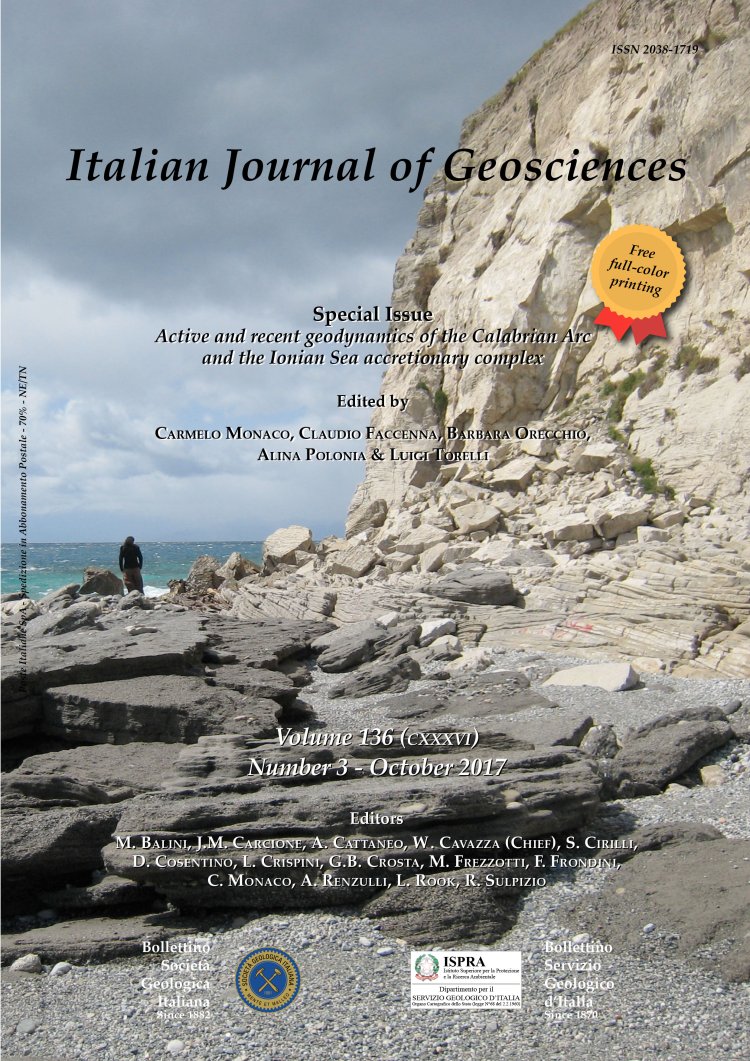
Seismotomographic detection of major structural discontinuity in northern Sicily
Cristina Totaro (1), Ekaterina Kukarina (2,3), Ivan Koulakov (2,3), Giancarlo Neri (1), Barbara Orecchio (1) & Debora Presti (1)
(1) Department of Mathematics, Computer Sciences, Physics, and Earth Sciences, University of Messina, Messina. Corresponding author e-mail: ctotaro@unime.it.
(2) Trofimuk Institute of Petroleum Geology and Geophysics, SB RAS, Prospekt Akademika Koptyuga 3, Novosibirsk 630090, Russia.
(3) Novosibirsk State University, 2, Pirogova Str, 630090, Novosibirsk, Russia.
Volume: 136 (2017) f.3
Pages: 389-398
Abstract
We present the results of tomographic inversion computed with the use of the LOTOS code for Sicily and surroundings, a region of great geodynamic interest located on the Nubia-Europe margin where previous analyses have progressively improved the knowledge of seismic velocity structure without, however, permitting fine detection of tectonic units and structural discontinuities. We used LOTOS's devices for inversion, grid rotation and adaptation to ray density for application to a dataset of 7105 local earthquakes of the period 1990-2012. Our tomographic model highlights a previously undocumented major discontinuity which is located approximately along the northern coast of Sicily and is characterized by a sudden transition from low velocity imbricate thrust sheets and accretionary wedge in mainland Sicily (to the south) to relatively high velocity Tyrrhenian continental crust (to the north). Combining this finding with available geological and geodynamic information, we conclude that this northern Sicily seismic velocity discontinuity, which approximately corresponds to a regional fault system known as Kumeta-Alcantara, may have played a major role in the Miocene to Middle Pliocene, when lithosphere tearing occurred between the Tyrrhenian sea and Sicily in response to trench retreat. The more recent geodynamic settings of northern Sicily and the southern Tyrrhenian can be unravelled from Quaternary geological observations, seismicity and GPS data, which indicate that (i) the northern Sicily discontinuity has ceased to be active in more recent times; and (ii) the reorganized slow convergence of Nubia with respect to Europe is currently accommodated ~100 km north of Sicily, along the east-trending seismogenic belt enclosing Ustica and the Aeolian Islands.
Keywords
Get Full Text Attached